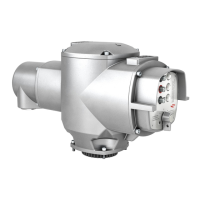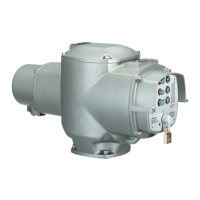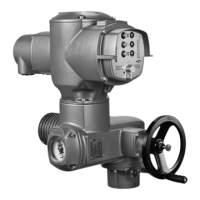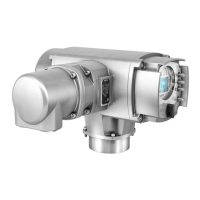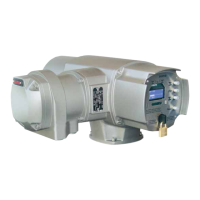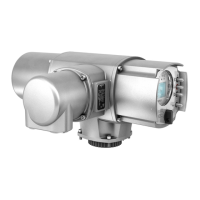Hot surfaces, e.g. possibly caused by high ambient temperatures or strong
direct sunlight!
Danger of burns
→
Check surface temperature and wear protective gloves, if required.
→
Set selector switch [4] to position Local control (LOCAL).
➥
The actuator can now be operated using the push buttons [1 – 3]:
-
Run actuator in direction OPEN: Press push button [1] .
- Stop actuator: Press push button [2] Stop.
-
Run actuator in direction CLOSE: Press push button [3] .
Information
The OPEN - CLOSE operation commands can be given either in push-to-run operation
mode or in self-retaining mode. In self-retaining mode, the actuator runs to the defined
end position after pressing the button, unless another command has been received
beforehand.
6.2.2. Actuator operation from remote
→
Set selector switch to Remote control (REMOTE).
➥
Now, it is possible to operate the actuator via remote control, via operation
commands (OPEN, STOP, CLOSE) or analogue setpoints (e.g. 0 – 20 mA).
Information
For actuators equipped with positioner, it is possible to optionally select between
open-close duty (REMOTE OPEN-CLOSE) and modulating duty (REMOTE
SETPOINT). Selection is made via REMOTE MANUAL input, e.g. based on a 24 V
DC signal (refer to wiring diagram).
Behaviour in modulating duty for version with positioner:
In case of signal loss of setpoint E1 or actual value E2, the actuator moves to a
preset position.The following reactions are possible:
●
Fail as is: Actuator stops immediately and remains in this position.
●
Fail close: Actuator moves the valve to end position CLOSED.
●
Fail open: Actuator moves the valve to end position OPEN.
The behaviour on loss of signal can be set via a switch in the controls.
39
SA 25.1 – SA 48.1 / SAR 25.1 – SAR 30.1
AM 02.1 Operation

